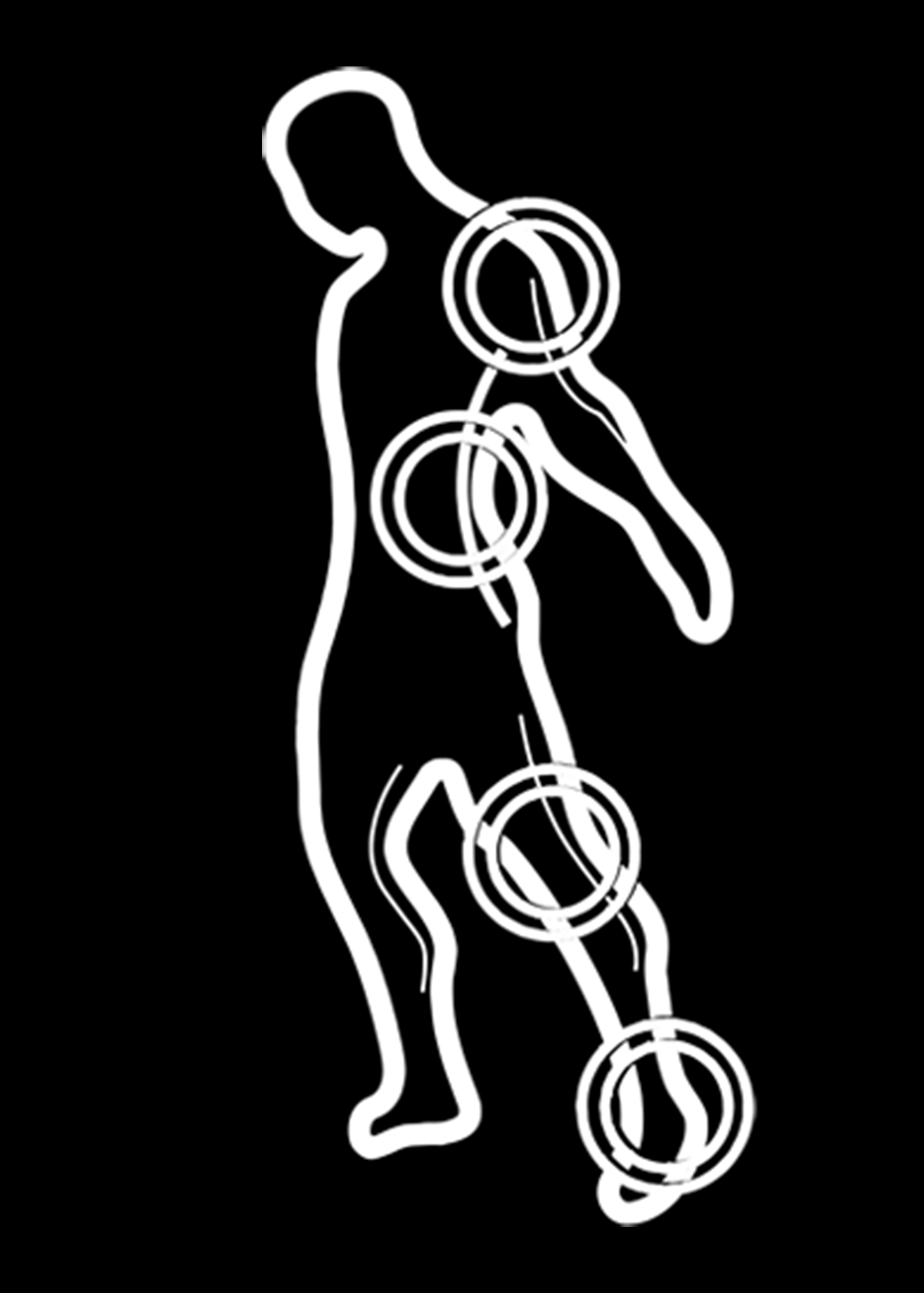Dealing with the most common sprained ligament, the Anterior Talofibular Ligament, which occurs mostly with inversion injuries, would be beneficial to understand the reason for common occurrences of this injury once originally sprained. In school, I have been taught that the ligament loses some of its tensile strength and therefore the importance of building up the Peroneal musculature that can perform the same action of limiting excessive ankle inversion during sport and play. The other reason I was taught, was the loss of proprioception of the ankle joint. Proprioception is the ability to sense the joint position in space. While my contention is basically a spin off of the original reasons for reoccuring ankle sprains, I believe the clinical difference when it comes to treatment and return to play criteria can be more helpful.
When someone generally gets injured, the layman will start to notice a "limp" or what clinicians call a gait abnormality. The body naturally has compensatory techniques to relieve its own discomfort and pain. When we sleep at night, we will position ourselves in the least tense position in order to fall asleep. For example, if someone has a tight upper trapezius on one side of the neck (due to underlying vertebral position or general joint pathology), they will generally bend their head to that side to put the muscle on slack. While this might be bad in the long run by creating more shortness in the muscle, in the short term it means decreased tension in the neck in order to sleep.
When walking, the same principle applies. If someone injures their ankle, they might be in pain for a short period of time. During that time, the body will adjust to lessen the pain by decreasing the amount of weightbearing into the ankle joint by either: 1) decreasing total weightbearing in that leg and thereby increasing more load into the opposite leg 2) decreasing the amount of weightbearing time on that leg by shortening the stride 3) positioning the leg in a way to adjust the forces to transfer more load into a neighboring or joint.
After injuring the ankle, one might position the leg into more hip abduction (kind of a tripod stance or gait) decreasing ankle inversion torque forces and positioning into more eversion and pronation. This can have deleterious consequences and snowball effects for other joints of that extremity in the future, but we will save that for another discussion ( maybe "The Effect of Inversion Sprains on Gait as it relates to the _____). One might also start to increase the weightbearing on the contralateral leg and lessening the amount of weight on the effected leg. This, in my opinion, can be a big factor in reinjuring the ankle once again. As the leg gets used to less weightbearing on that leg (unless addressed early on after the acute stage of the injury by reestablishing normal gait patterns and equal weightbearing), the individual will get accustomed to this new gait pattern that can now be, unfortunately, translated into sports. When participating in sports, we can see how this might affect the landing from a jump. When you are not used to absorbing normal forces during average activities such as walking, how much more so would you have trouble absorbing the force when its double or triple that amount? Let me give you this scenario: John Smith, a high school basketball player injures his right ankle. After "limping" for a few weeks, he states that his ankle has "healed" and he is ready to get back on the court. He starts practicing and his coach sees that he can jump and run pain-free so he puts him back in the lineup. John is fine for most of the game. Any negative effects of the injury are negligible and he looks like he came out of this injury unscathed. Until he jumps up for a rebound and is contested from the left side. He has to adjust in midair and lands with most of his weight on his right leg. His ankle has been unused to this type of weightbearing the past few weeks. It immediately goes into excessive inversion again and he is out for another few weeks with what is called a "re-aggravation" of his original injury. But here's the thing. It never fully "healed". It felt like it did with his new compensatory gait pattern, but proper weightbearing and normalized gait mechanics were never established. He should have never been cleared to play even though the eye test seemed like he was 100%.
Most of the rehabilitation treatment we use for inversion sprains actually attack this problem. Performing single leg activities and challenging the ankle with uneven surfaces during balance exercises help the ankle get used to increased weightbearing. Most of this is to challenge the treatment thoery of strengthening the peroneals and improving proprioception. A nice addition would be a patient educational focus of equalizing weightbearing during gait and stairs as well as handling single leg forces with sport specific training with and without perturbations to simulate game day situations.
Proposed Return to Play Criteria after Ankle Inversion Sprains:
1) even weightbearing in quiet stance using clinical observational expertise (if you feel comfortable making that determination)
2) perform single leg squats equal to in repetition, quality and knee/hip flexion angle of supposed healthy contralateral leg
3) jumping and landing on single leg with and without perturbations to hip and trunk with the ability to land with minimal sway of the trunk or hip and especially no loss of balance (compare to healthy contralateral leg to determine normal for individual)
4) no subjective complaints of imbalance or pain with any of the above activities
